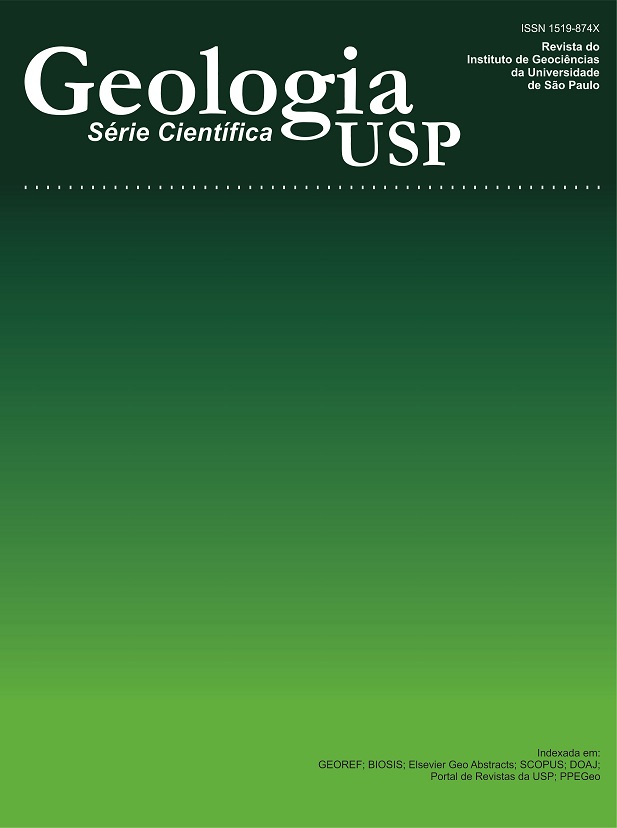Determination of the chemical properties of water and sediments in agricultural land use by using energy dispersive X-ray fluorescence spectrometry
DOI:
https://doi.org/10.11606/issn.2316-9095.v16i1p85-100Keywords:
Metals, Water supply, Sediment, Soil, Agriculture, EDXRFAbstract
The energy dispersive X-ray fluorescence spectrometry (EDXRF) methodology was applied in 29 samples on a year (Jun/2012 to Jul/2013) of monitoring program to assess freshwater quality of Lajeado Pardo River, the main tributary of a water supply reservoir, and 4 samples of soil from the surrounding forest and 6 samples of river and lake sediments were analyzed. High levels of Fe and Mn have a natural relationship with the soils of the region, while Cu, Zn, Ba and Cr, although natural soil micronutrients, may have enrichment from the use of fertilizers and pesticides. According to the Canadian Sediment Quality Guidelines for the Protection of Aquatic Life and CONAMA nº 344/2004 regulations, the concentration of Cr and Cu found in the sediments can cause severe effects on aquatic life. In freshwater, the concentration of Fe, Zn, Cu and Mn was higher than the maximum indicated by the Canadian Water Quality Guidelines for the Protection of Agriculture and the Canadian Water Quality Guidelines for the Protection of Aquatic Life. The elements Al, V, Zr, Sr, Cr, Y and Nb were not detected in fresh water, being restricted to soils and bottom sediments. Mean annual solid discharge in Lajeado Pardo River was estimated in 9.59 ton/year.km2 . But, on a rainy day, the observed yield was 7.38 m³/s and the specific solid discharge was estimated in 8.09 ton/day.km2 , that is 307 times more than the daily mean dischargeDownloads
Download data is not yet available.
Downloads
Published
2016-04-07
Issue
Section
Articles
License
Authors who publish in this journal shall comply with the following terms:
- Authors keep their copyright and grant to Geologia USP: Série Científica the right of first publication, with the paper under the Creative Commons BY-NC-SA license (summary of the license: https://creativecommons.org/licenses/by-nc-sa/4.0 | full text of the license: https://creativecommons.org/licenses/by-nc-sa/4.0/legalcode) that allows the non-commercial sharing of the paper and granting the proper copyrights of the first publication in this journal.
- Authors are authorized to take additional contracts separately, for non-exclusive distribution of the version of the paper published in this journal (publish in institutional repository or as a book chapter), granting the proper copyrights of first publication in this journal.
- Authors are allowed and encouraged to publish and distribute their paper online (in institutional repositories or their personal page) at any point before or during the editorial process, since this can generate productive changes as well as increase the impact and citation of the published paper (See The effect of Open Access and downloads on citation impact).
How to Cite
Mancuso, M. A., Azevedo, F. C. G. de, Wastowski, A. D., & Fioreze, M. (2016). Determination of the chemical properties of water and sediments in agricultural land use by using energy dispersive X-ray fluorescence spectrometry. Geologia USP. Série Científica, 16(1), 85-100. https://doi.org/10.11606/issn.2316-9095.v16i1p85-100





